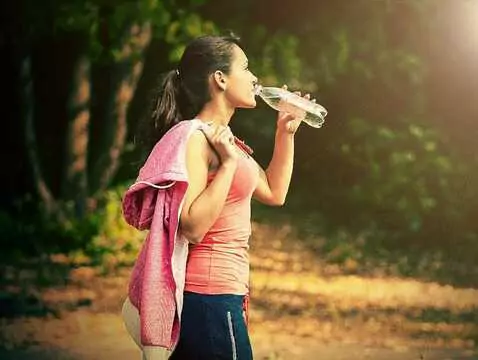Every one of us dreams of looking beautiful and feminine on a daily basis. Often we are hampered by the extra centimetres deposited in our hips or on our once flat stomach. What's the best way to make the mantra "I need to lose a few kilos" a reality? "Use the method of small steps-?"- writes Kasia Cichopek in her guide "Eat, lose weight and enjoy yourself!" Don't jump in at the deep end straight away - first, before you start radically changing your diet, make a thorough plan. Consider whether you're just at the point in life where you can really focus more on your needs."
The answers to these questions will help you get a better idea of your eating patterns. So let's look at them in a little more detail.
-
Increase the amount of fibre in your diet
You will feel its beneficial effects in several ways. Firstly, fibre passes through the digestive system and "cleanses" it of toxic waste products. Secondly, it stimulates intestinal movements, making digestion faster. Thirdly, it reduces somewhat the absorption of fats, and fourthly, it prevents hunger attacks because it absorbs water and swells in the stomach, giving a feeling of satiety. The advantages alone! But that's not all. Another great advantage of foods with fibre is that you have to chew or bite them for a long time. This prolongs the meal time, so that the "I've had enough!" signal reaches your brain while you are already eating, and not just when you have swept a double portion from your plate. But beware: to ensure that the action of fibre does not turn against you, remember to drink at least 1.5-2 litres of water a day. If you don't drink enough water, the fibre will start to lodge in your intestines and can lead to - let's put it mildly - trouble in the toilet. Abdominal pain can also occur if there is too much fibre in the diet (more than 40 g per day). Usually, however, we eat rather too little of it, as exaggeration in the other direction is difficult to achieve.
The best sources of fibre are cereals -- legumes -- fruit (apples, citrus fruits) -- flaxseed -- vegetables, e.g. celery -- bran
-
Back to making tummies
Often, when you start to exercise intensively, the kilos do not budge, but the waist and thigh circumference changes. The yardstick for my appearance is not the weight, but... my trousers. When they get too tight, it's a signal to me: "Oh, you've got to get back on!".
-
Eat regularly
Eat no less frequently than every 3-4 hours. With a consistent rhythm of meals, you will find it easier to control your hunger and your metabolism will speed up.
-
Don't skimp on your vegetables
Carrots sting in your teeth and beetroots put you off by their very name? I know plenty of women who let their children leave the salad behind, just so they can finish their chops. Many of us acquired this dismissive attitude to vegetables when we were children. Meanwhile, vegetables and fruit are a major source of vitamins and, just as importantly, fibre, which, by filling your stomach, prevents you from overeating between meals. A portion of vegetables does not
does not have to be large: the one recommended by nutritionists is around 100 g or 200 ml of juice (fruit or vegetable). However, if you feel like it, you can eat a lot more without fear - you certainly won't get fat. But be careful: as always, it is not only the quantity that counts, but also the quality: try to include vegetables from different colour groups on your plate every day:
red (tomatoes, peppers, apples), green (broccoli, spinach, cucumber), orange (carrots, pumpkin, citrus), white (cauliflower, onions, radicchio) and purple (aubergine, blackcurrants). Vegetables from different groups contain different vitamins and minerals, so it is important to eat them all. There are benefits lurking in them: they contain a lot of water, even more vitamins and fibre, and calories as little as nothing!
-
Love fish
Baked or steamed, they are a great substitute for meat at lunch. The best choices are tuna, cod, mackerel, salmon or herring. Beware of fish from the Baltic Sea, however; they can contain a lot of mercury.








